What A Healthy CHR Looked Like In 2021
By Sean Ross
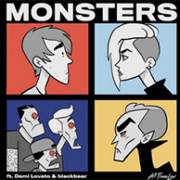 In Some Markets, 2021 Was Way Less Sad For CHR
In Some Markets, 2021 Was Way Less Sad For CHR
They were the CHR markets where All Time Low’s “Monsters,” AJR’s “Bang,” and Machine Gun Kelly’s “My Ex’s Best Friend” were even bigger hits, even sooner. They were faster on Country or Country-adjacent hits–stations where Walker Hayes’ “Fancy Like” made it into power, sometimes for more than a month, but also where collaborations like Elle King/Miranda Lambert and Nelly/Florida Georgia Line were bigger hits.
WIXX Green Bay, Wis., and WKRZ Wilkes-Barre, Pa., had one of their biggest records of the year with Why Don’t We’s “Fallin’ (Adrenaline).” On WIXX, it was literally the biggest record of the year, according to BDSradio. Throughout the year, WDW returned to power rotation on WIXX every few weeks the same way that the Kid Laroi’s “Without You” did at major-market CHR.
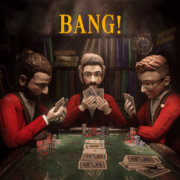 AJR’s “Bang” was in the bigger, faster, and “bigger faster” category at the handful of pop-leaning outliers. But so was “Way Less Sad,” which made it into power for a lot of these stations, as well as the year-end top 20. “Way Less Sad” was No. 12 for the year for SiriusXM Hits 1 which has always had its own watermark singles. This year, Hits 1’s No. 3 most-played song was Machine Gun Kelly & Halsey’s “Forget Me Too,” not a song worked to CHR elsewhere.
AJR’s “Bang” was in the bigger, faster, and “bigger faster” category at the handful of pop-leaning outliers. But so was “Way Less Sad,” which made it into power for a lot of these stations, as well as the year-end top 20. “Way Less Sad” was No. 12 for the year for SiriusXM Hits 1 which has always had its own watermark singles. This year, Hits 1’s No. 3 most-played song was Machine Gun Kelly & Halsey’s “Forget Me Too,” not a song worked to CHR elsewhere.
Other stations that have more of a pop/rock lean than the national norm include WDJQ (Q92) Canton, Ohio, the Bristol Broadcasting CHRs (WVSR Charleston, W. Va., WDDJ Paducah, Ky., and WAEZ Johnson City, Tenn.), and WVAQ Morgantown, W. Va. WNCI Columbus, Ohio tends to split the difference between its large market iHeart CHR sister stations and the smaller market outlets.
While some radio listening began to ease back toward its pre-COVID patterns this winter and spring, there was little evidence of it at large-market CHR. At year’s end, there is a feeling that pop music is better, but definitely not in the MTV/Michael Jackson-in-1993 or teen-pop-in-1997 way that could yet drive a format resurgence—especially with the impact of streaming on younger listeners.
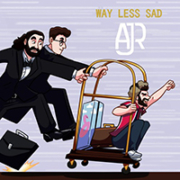 In the medium- and smaller-markets, things were, well, “Way Less Sad” for CHR as evidenced by the spring ‘21 Nielsens. I’ve written at length about WIXX and WKRZ as stations that somehow chose not to participate in the format downturn. Bristol’s CHRs don’t buy Nielsen. Townsquare’s WKFR Kalamazoo, Mich., and WZOK Rockford, Ill., do buy ratings, and deserve a mention as well.
In the medium- and smaller-markets, things were, well, “Way Less Sad” for CHR as evidenced by the spring ‘21 Nielsens. I’ve written at length about WIXX and WKRZ as stations that somehow chose not to participate in the format downturn. Bristol’s CHRs don’t buy Nielsen. Townsquare’s WKFR Kalamazoo, Mich., and WZOK Rockford, Ill., do buy ratings, and deserve a mention as well.
We don’t have ratings for SXM Hits 1, but as with the satellite service in general, it cast a more unavoidable footprint in the format this year. A decade ago, broadcast Top 40 provided itself on not playing, say, JTX’s “Love in America” no matter how big it was on Hits 1. This year, label reps say those stories are less likely to be dismissed.
Here’s SiriusXM Hits 1’s Top 15 of 2021. Airplay is measured from Jan. 1 through Dec. 2, reflecting the chart year used for the BDSradio/Billboard national charts.
1 – Billie Eilish, “Therefore I Am”
2 – Glass Animals, “Heat Waves”
3 – Machine Gun Kelly & Halsey, “Forget Me Too”
4 – Olivia Rodrigo, “Good 4 U”
5 – Doja Cat, “Kiss Me More”
6 – Marshmello x Jonas Brothers, “Leave Before You Love Me”
7 – Tate McRae, “You Broke Me First”
8 – Lil Nas X, “Montero (Call Me By Your Name)”
9 – All Time Low f/Blackbear, “Monsters”
10 – Taylor Swift, “Willow”
11 – The Kid Laroi & Justin Bieber, “Stay”
12 – AJR, “Way Less Sad”
13 – The Weeknd, “Save Your Tears”
14 – Olivia Rodrigo, “Déjà vu”
15 – Machine Gun Kelly x blackbear, “My Ex’s Best Friend”
Here’s WIXX’s Top 15 of 2021:
1 – Why Don’t We, “Fallin’ (Adrenaline)”
2 – Elle King & Miranda Lambert, “Drunk (And I Don’t Wanna Go Home)”
3 – Justin Bieber, “Anyone”
4 – Nelly & Florida Georgia Line, “Lil Bit”
5 – Dua Lipa, “Levitating”
6 – 24kGoldn f/Ian Dior, “Mood”
7 – Machine Gun Kelly x Blackbear, “My Ex’s Best Friend”
8 – All Time Low f/Blackbear, “Monsters”
9 – Dua Lipa, “We’re Good”
10 – Pink, “All I Know So Far”
11 – AJR, “Way Less Sad”
12 – Lukas Graham, “Share That Love”
13 – AJR, “Bang!”
14 – The Kid LAROI, “Without You” (never switched to the Miley mix because the original was working)
15 – Maroon 5 f/Megan Thee Stallion, “Beautiful Mistakes”
Some other unusual titles among WIXX’s most-played:
- Keith Urban f/Pink, “One Too Many” (17)
- Dirty Heads f/Train, “Vacation” (23)
- Kane Brown f/Blackbear, “Memory” (27)
- Banners, “Someone to You” (32)
- Tom Grennan, “Little Bit of Love” (34)
- Clinton Kane, “Chicken Tendies” (38)
- Astronomers, “Overthinking” (55) – local pop/punk hit
Here’s WKRZ, which is a little more of a hybrid between the large- and small-market versions.
1 – The Kid LAROI f/Miley Cyrus, “Without You”
2 – Machine Gun Kelly x Blackbear, “My Ex’s Best Friend”
3 – AJR, “Way Less Sad”
4 – All Time Low f/Blackbear, “Monsters”
5 – 24kGoldn f/Ian Dior, “Mood”
6 – The Weeknd, “Save Your Tears”
7 – Ed Sheeran, “Bad Habits”
8 – Chris Brown & Young Thug, “Go Crazy”
9 – Dua Lipa, “Levitating”
10 – Olivia Rodrigo, “Good 4 U”
11 – Glass Animals, “Heat Waves”
12 – Justin Bieber, “Anyone”
13 – Doja Cat f/SZA, “Kiss Me More”
14 – Why Don’t We, “Fallin’ (Adrenaline)”
15 – Regard x Troye Sivan x Tate McRae, “You”
Also of note:
- Nelly & Florida Georgia Line, “Lil Bit” (20)
- Harry Styles, “Golden” (28)—also #74 on WIXX
- Shawn Mendes, “Wonder” (31)
- Zoe Wees, “Control” (37)
- Pink, “All I Know So Far” (42)
- Jessia, “I’m Not Pretty” (45)
WNCI is further still toward the large-market model, but still has some outliers of its own. Tate McRae’s “You Broke Me First” was No. 7 in Columbus vs. No. 19 nationally. Duncan Laurence’s “Arcade” was No. 15 vs. No. 39 national. We also saw:
- Kane Brown x Blackbear, “Memory” (18)”
- AJR, “Bang” (20)—WNCI is also leading on “The Good Part” as a streaming-driven bringback
- Harry Styles, “Golden” (26)
- AJR, “Way Less Sad” (32)
- Twenty One Pilots, “Shy Away” (41, as you’d expect from the local heroes)
Here are some highlights from WAEZ (Electric 94.9) Johnson City, Tenn., which also tends to take from both lists. A lot of its hits tend to be reflected at its Bristol Broadcasting sisters, WVSR (Electric 102.7) Charleston, W. Va., and WDDJ (Electric 96.9) Paducah, Ky.
- Machine Gun Kelly x Blackbear, “My Ex’s Best Friend” (1)
- Tate McRae, “You Broke Me First” (3)
- Chris Brown f/Young Thug, “Go Crazy” (4)
- Maroon 5 f/Megan Thee Stallion, “Beautiful Mistake” (8)
- Harry Styles, “Golden” (10)
- AJR, “Bang” (14)
- Justin Bieber, “Anyone” (21)
It’s a different sort of alternate universe CHR, but it’s fun to look at the top 15 Canadian CHR hits, as measured by BDSradio.
1 – Dua Lipa, “Levitating”
2 – The Weeknd, “Save Your Tears” (Cancon)
3 – Maroon 5 f/Megan Thee Stallion, “Beautiful Mistakes”
4 – Lil Nas X, “Montero (Call Me By Your Name)”
5 – Doja Cat f/SZA, “Kiss Me More”
6 – Ed Sheeran, “Bad Habits”
7 – Justin Bieber f/Daniel Caesar & Giveon, “Peaches”
8 – Shawn Mendes & Justin Bieber, “Monster” (Cancon, although most Mendes and Bieber songs, including “Peaches” are not)
9 – The Kid Laroi & Justin Bieber, “Stay”
10 – 24KGoldn f/Iann Dior, “Mood”
11 – Tate McRae, “You Broke Me First” (Cancon)
12 – Olivia Rodrigo, “Good 4 u”
13 – DVBBS f/Quinn XCII, “West Coast” (Cancon)
14 – Elijah Woods, “Lights” (Cancon)
15 – The Kid Laroi f/Miley Cyrus, “Without You”
Finally, here are the biggest songs of the year on the handful of English-language Mexican stations measured by BDSRadio. Top 40 in Mexico (and Puerto Rico) has often had more of a European flavor with more dance and more danceable modern rock represented.
1 – The Weeknd, “Save Your Tears”
2 – Doja Cat f/SZA, “Kiss Me More”
3 – Silk Sonic, “Leave the Door Open”
4 – Olivia Rodrigo, “Driver’s License”
5 – Tiesto, “The Business”
6 – Masked Wolf, “Astronaut in the Ocean”
7 – Marshmello x Jonas Brothers, “Leave Before You Love Me”
8 – Justin Bieber f/Daniel Caesar & Giveon, “Peaches”
9 – Ed Sheeran, “Bad Habits”
10 – Majestic x Boney M, “Rasputin”
11 – The Kid Laroi f/Justin Bieber, “Stay”
12 – Harry Styles, “Golden”
13 – Lil Nas X, “Montero (Call Me By Your Name)”
14 – Maneskin, “Beggin’”
15 – The Weeknd, “Blinding Lights”
Sean Ross is a veteran programmer, researcher, and the author of the Ross On Radio newsletter. Find him or subscribe free @RossOnRadio on Twitter. Contact him at rossonradio@comcast.net
Those Who Try Powergold Get It
Powergold users across the world rate us #1 in the industry for our ease of use, control of music flow, radio experience, and support and training. It’s time to discover Powergold and all the great things you’ve been missing.
Please fill out this form and we’ll reach out right away to schedule your demo.

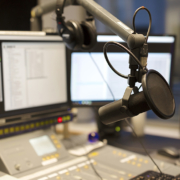
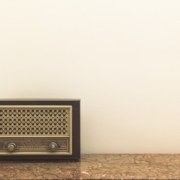
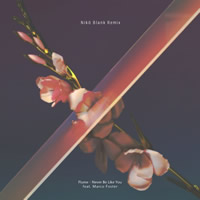 Claustrophobia presents itself in too many similarly-produced hit songs, and not a variety of musical styles. For much of the late 2010s, that dominant style was mid-to-down tempo, repetitious, unhappy. Top 40 flourished when the two-of-the-same segue was “Dynamite” into “Party Rock Anthem.” It was different when the similar sounding hits were Chainsmokers, “Don’t Let Me Down” and Flume, “Never Be Like You.” I do feel that the contemporary music is better now, although there’s still not enough depth and variety to power a CHR comeback.
Claustrophobia presents itself in too many similarly-produced hit songs, and not a variety of musical styles. For much of the late 2010s, that dominant style was mid-to-down tempo, repetitious, unhappy. Top 40 flourished when the two-of-the-same segue was “Dynamite” into “Party Rock Anthem.” It was different when the similar sounding hits were Chainsmokers, “Don’t Let Me Down” and Flume, “Never Be Like You.” I do feel that the contemporary music is better now, although there’s still not enough depth and variety to power a CHR comeback.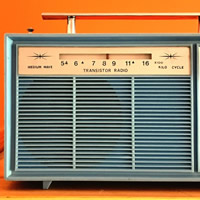
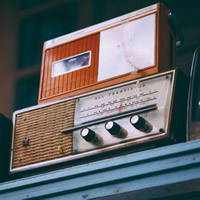
 I’m not the first person to make
I’m not the first person to make 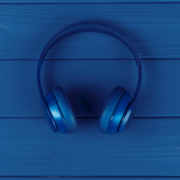
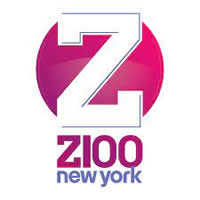 In late July, I heard WHTZ (Z100) New York play “Good 4 U” by Olivia Rodrigo, followed by “Love Again” by Dua Lipa. “Good 4 U” was, at that point, an eight-week-old record, but one of the few that had gone to power rotation almost instantly. “Love Again” ultimately did not go to power for most stations but at that moment, it was a new, uptempo single from a core artist.
In late July, I heard WHTZ (Z100) New York play “Good 4 U” by Olivia Rodrigo, followed by “Love Again” by Dua Lipa. “Good 4 U” was, at that point, an eight-week-old record, but one of the few that had gone to power rotation almost instantly. “Love Again” ultimately did not go to power for most stations but at that moment, it was a new, uptempo single from a core artist.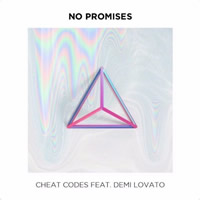
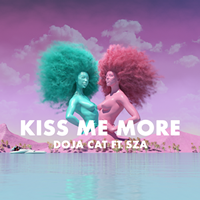 Freshness and excitement are hard things to quantify. Radio programmers and researchers know how to ask if listeners are burnt on a song, and we accept that there are some songs that listeners might both love and be tired of. Until they specifically articulate that, however, we assume they are as enthusiastic about the fifth play and the five-hundredth. Isn’t hearing a favorite song inherently exciting? If “Kiss Me More” or “Good 4 U” are still testing power, is it just arbitrary to decide that we need some new ones?
Freshness and excitement are hard things to quantify. Radio programmers and researchers know how to ask if listeners are burnt on a song, and we accept that there are some songs that listeners might both love and be tired of. Until they specifically articulate that, however, we assume they are as enthusiastic about the fifth play and the five-hundredth. Isn’t hearing a favorite song inherently exciting? If “Kiss Me More” or “Good 4 U” are still testing power, is it just arbitrary to decide that we need some new ones?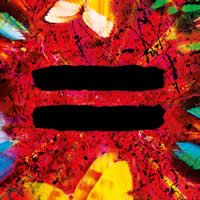 In recent weeks, Z100 has blurred the difference between “power” and “power new.” Through late August, monitors showed it playing five powers, topping out around 117-122x a week. This week, its eight most-played songs are getting between 82x and 72x spins per week. Those most-played songs go as far back as “Déjà vu” and as recent as “Shivers” (meaning that both Sheeran hits are included). Z100 has recently introduced a personality afternoon show, which would naturally affect available spins, but it didn’t rework its rotations immediately.
In recent weeks, Z100 has blurred the difference between “power” and “power new.” Through late August, monitors showed it playing five powers, topping out around 117-122x a week. This week, its eight most-played songs are getting between 82x and 72x spins per week. Those most-played songs go as far back as “Déjà vu” and as recent as “Shivers” (meaning that both Sheeran hits are included). Z100 has recently introduced a personality afternoon show, which would naturally affect available spins, but it didn’t rework its rotations immediately.